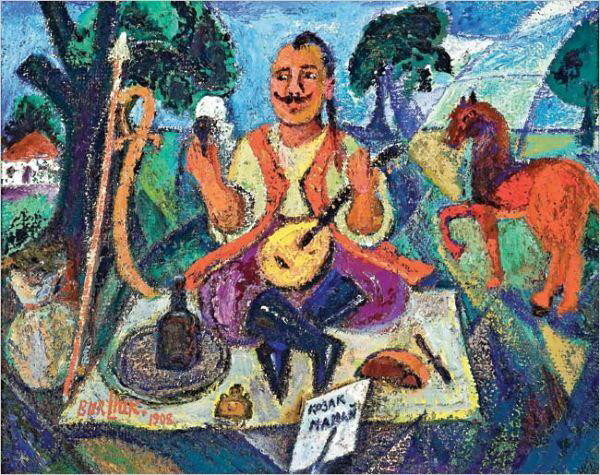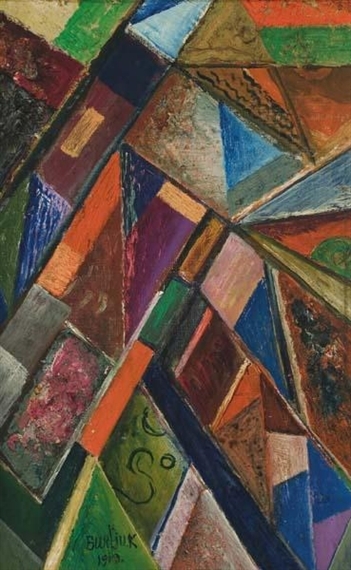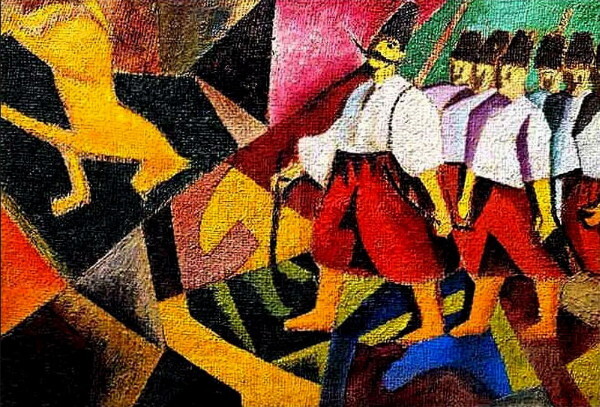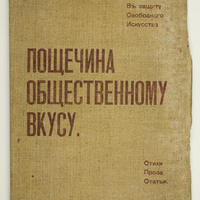Early Life in Ukraine
In the early days of his career, Burliuk produced countless pieces of art in various styles, demonstrating the influences of Western trends, such as Cubism, Expressionism, and Impressionism, as well as local traditions, such as Ukrainian folk arts and iconography, on his artistic perspective. At this time, Burliuk’s main creative hub was the Chornianka Estate, a large piece of property belonging to Count Aleksandr Mordinov near Kherson his father began supervising in 1907.[1] Burliuk and his family spent summers there, drawing, painting, writing, and more, and soon, the estate developed into a kind of artistic commune, where the Burliuk’s invited their friends and colleagues.
Hylaea and the Russian Futurists
Between 1907 and 1913, many noted artists in different mediums, including “Aleksei Kruchenych, Velimir Klebnikov, Benedikt Livshits, Vladimir Mayakosvky, Vasilii Kamensky, Wassily Kandinsky”[2] visited the estate. In fact, it was there that the Hylaea group, later renamed Futurists, formed, discussed, and experimented. In this period of his life, Burliuk produced art at a rate reflecting the fecundity of the nature around him, participated in many significant exhibitions, such as the famous “Der Blaue Reiter” and continued to discuss the meaning of the avant-garde with his contemporaries. As Shkandrij notes, Burliuk’s early art “fused Fauvist, Cubist, and Futurist influences. Some works suggest a simplified Cubist manner, others recall the Italian Futurists’ prewar attempts to represent motion by separating movement into individual frames, giving the impression of figures with numerous limbs or heads.”[3] However, it should be noted that unlike the Italian Futurists, at this time Burliuk’s art did not “celebrate the city, technology, or machinery, but focused strongly on the natural environment.”[4]
[2] Shkandrij, “Beyond Futurism: David Burliuk 1882-1967.” Page 13.
[3] Myroslav Shkandrij, “The Steppe as Inspiration in David Burliuk’s Art,” Journal of Ukrainian Studies 30, no. 2 (Winter 2005). Page 53.
[4] “The Hylaea group, which formed in 1910-11m consisted of the three Burliuk brothers (David, Vladimir, and Nikolai, Livshits, Kamensky, Klebnikov, Elena Guro…Mayakosvky, and Kruchenych.” Shkandrij. "The Steppe as Inspiration in David Burliuk’s Art.” Page 53.







